We’ve been talking a lot about geography and museum jobs on this blog, and the impact that place has on housing, finances and daily commutes. This discussion has been in the light of key assumptions about jobs and museums. The first assumption is that jobs tend to be centred in metropolitan areas. The second assumption is that of these metropolitan centres, London stood out as the place brimming with jobs.
As I wasn’t aware of any attempts to systematically plot the geographic spread of heritage employment opportunities, I decided to do so myself. I asked Jim Roberts, administrator of the University of Leicester’s Museum Studies JobsDesk, to provide me with all the job adverts from that source for the whole of 2016. After Jim delivered, I set about organising each listing into local government districts. Cutting out all of the voluntary roles, here is what the distribution of paid roles as advertised on the Leicester JobsDesk looks like for England:
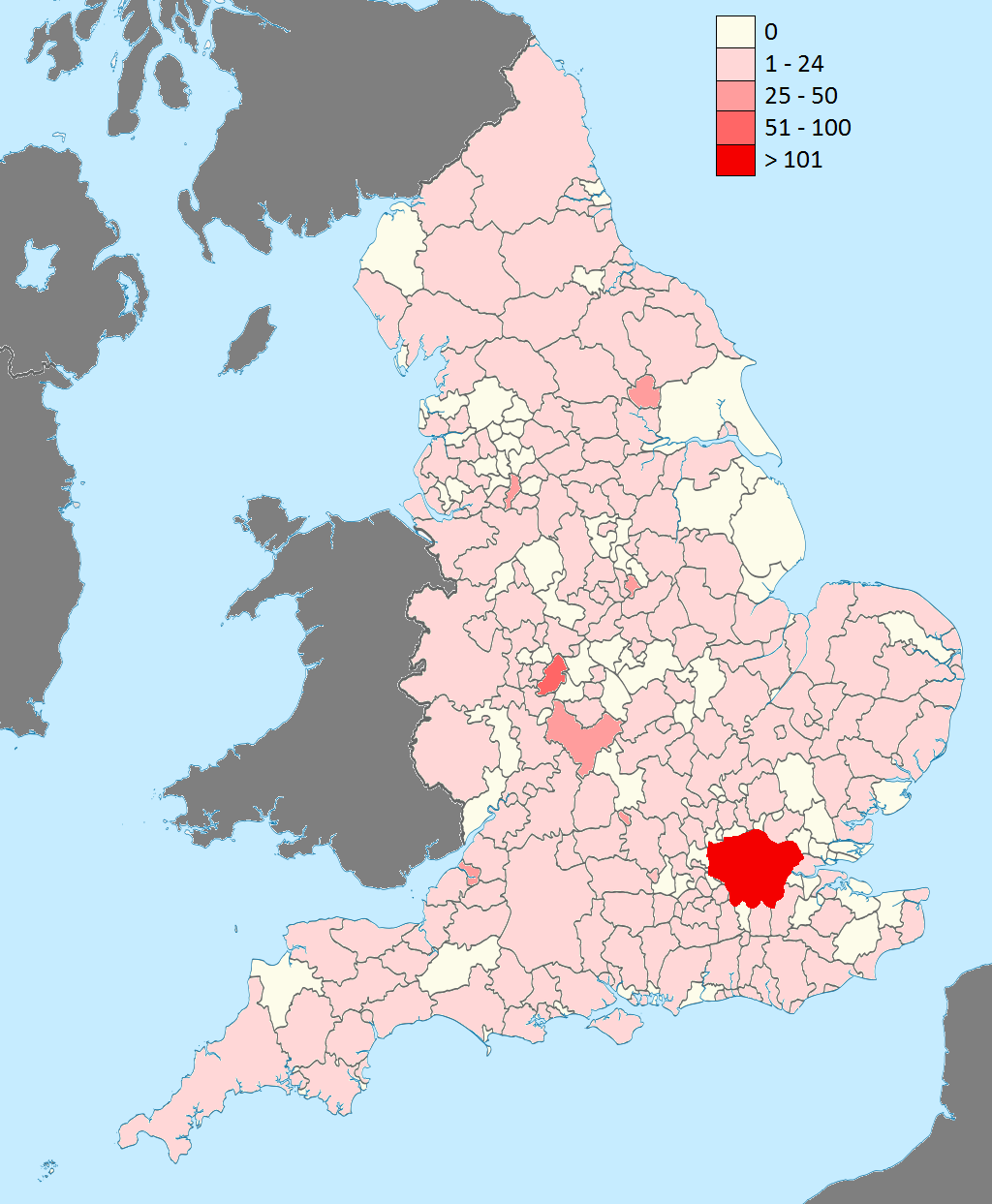
Little surprise here that London appears to be so dominant. Yet, importantly, the distribution is more or less even across the rest of the country. No single region appears as an obvious ‘black hole’. Perhaps encouragingly, there are more jobs in England that are not in London than which are in London. The same even spread is also true for Scotland (albeit with a strong weighting within Edinburgh):

And for Wales (with Cardiff performing comparatively well):

What is much more telling is the disparity in the numbers of jobs available between the constituent nations of the United Kingdom. England performs more strongly than any other nation:
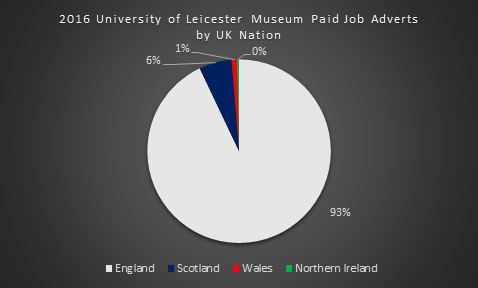
But let’s compare the above with the difference in the four nations’ populations below:
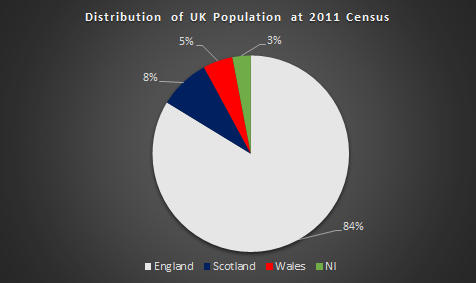
Expressed as a ratio of paid jobs to millions of people, the weighting in England’s favour is still apparent, but the contrast is considerably less stark:
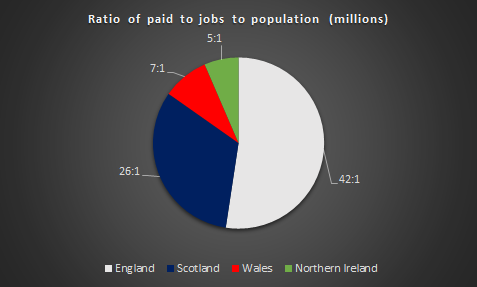
Why? Is the heritage industry just disproportionately bigger in England? Or does Leicester JobsDesk simply draw more adverts from England and English organisations? Sadly, I don’t have the resources to thoroughly investigate the levels of funding available to museums across the UK. But one answer may be that it is London which drives up the figures for the rest of England
So all the jobs are in London, right?
On the face of it, sure. While it’s true that there are more jobs in England that are not in London than are in it, it’s looking at the ratios of jobs per millions of people that is the more revealing thing.

But London is a big and extremely diver place. It would be wrong to just say that ‘all the jobs are in London’. A number of boroughs have many, many more jobs within them than some of the others. Some boroughs have none at all. And one borough stands head and shoulders above the rest – Kensington and Chelsea. This becomes very apparent when we map out the spread of paid jobs within greater London.
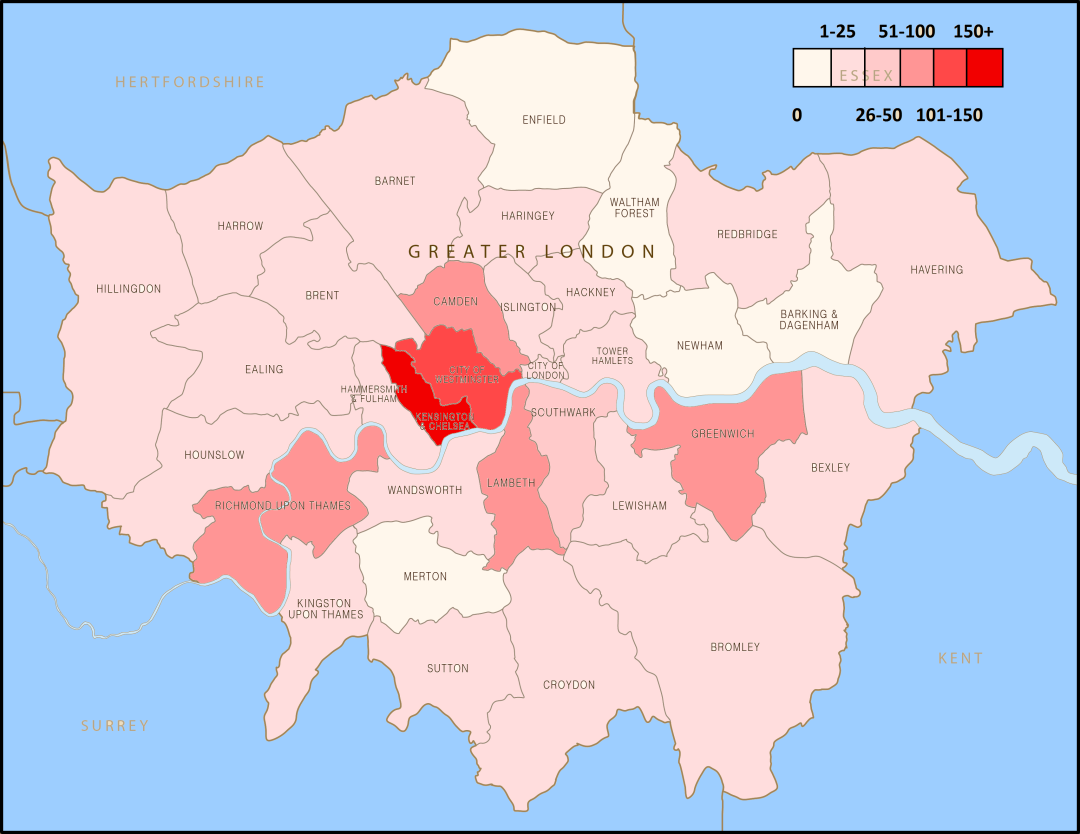
It is to ratios again we turn in order to bring the disparity between London boroughs, England. and the rest of the UK to light. And what a stark light it is:

So, do I need to move to the Royal Borough of Kensington and Chelsea?
The sheer dominance of one London borough when it comes to the ratio of jobs per population may say a lot about our sector – the fact that the Big Nationals (Kensington and Chelsea has four of them) receive much more funding than regional, local authority museums.
But it is important not to get too hung-up on ratios. In absolute terms, the ‘provinces’ still have more jobs than London.
To conclude, I will offer a piece of advice which I in turn once received:
Being able or willing to move – anywhere and everywhere – in pursuit of a job will open-up many more opportunities to you as an Emerging Museum Professional than if you stay in the same place…
…unless you live in Kensington and Chelsea. But then no one in the heritage sector could afford the rental prices.